FERNANDEZ. James W. (1982) Bwiti: An Ethnography of the Religious Imagination in Africa. Princeton: Princeton University Press.
FISCHER, Roland. HILL, Richard. THATCHER. Karen, and SCHUEB. James. (1970) “Psilocybin-Induced Contraction of Nearby Visual Space.” Agents and Actions, vol. 1. no. 4.
FLATTERY. David, and SCHMALTZ. Martin. (1989) Ahoy and Hard-line. Near Eastern Studies, vol. 21, Berkeley: University of California Press.
FREUD. Sigmund. (1963) The Cocaine Papers. Vine: Dunning Press.
FOURS. Peter. (1978) Hallucinogens and Culture. San Francisco: Chandler amp; Sharp.
GARROTE. D. A. E. (1957) The Maturing Culture: The Life and Economy of a Megalithic People in the Near East. Proceedings of the British Academy 43: 211-227.
GETTING, Fred. (1981) Dictionary of Occult, Hermetic, and Alchemical Sigils. London: Routledge amp; Kegan Paul.
GIMBUTAS. Marija. (1982) The Goddesses and Gods of Old Europe, 6500-3500 b.c.: Myths and Cult Images. Berkeley: University of California Press.
GRACIE. and ZARKOV. (1986) “An Indo-European Plant Teacher.” Notes from Underground 10, Berkeley.
GRAVES, Robert. (1948) The White Goddess. New York: Creative Age Press.
GRAVES, Robert. (1955) The Greek Myths. 2 vols. Baltimore: Penguin.
GRAVES, Robert. (1960) Food for Centaurs. Garden City. N. Y.: Doubleday.
GRAVES. Robert. (1964) Difficult Questions, Easy Answers. Garden City, N. Y.: Doubleday.
GRINSPOON, Lester. and BAKALAR. James B. (1979) Psychedelic Drugs Reconsidered. New York: Basic Books.
GRISWOLD. H. D. (1923) The Religion of the Rigveda. London: Oxford University Press. GROF. Stanislav. (1980) LSD Psychotherapy. Pomona, CA: Hunter House.
GROF. Stanislav. (1985) Beyond the Brain: Birth, Death, and Transcendence in Psychotherapy. New York: State of New York Press.
GUENTHER. Herbert V. (1966) Tibetan Buddhism without Mystification. Leiden. Netherlands: E. J. Brill.
HAYTER, Alethea. (1968) Opium and the Romantic Imagination. Berkeley: University of California Press.
HENRY. Donald Owen. (1973) The Natufian of Palestine: Its Material Culture and Ecology. Ann Arbor: University Microfilms.
HERER. Jack. (1990) The Emperor Wears No Clothes. Van Nuys, CA: Hemp Publishing.
HERODOTUS. (1901) Works. H. Cary. trans. London: George and Sons.
HOBHOUSE. Henry. (1985) Seeds of Change: Five Plants That Transformed Mankind. New York: Harper amp; Row.
HOFFER. A… and OSMOND. H. (1967) The Hallucinogens. New York: Academic Press.
HOFFER. A… and OSMOND. H. (1968) New Hope for Alcoholics. New York: University Books.
HOFMANN, Albert. (1983) LSD My Problem Child. Los Angeles: Tarcher.
HOOKE. S. H. (1963) Babylonian and Assyrian Religion. Norman: University of Oklahoma Press.
HUXLEY. Aldous. (1954) The Doors of Perception. New York: Harper.
HUXLEY, Aldous. (1977) Moksha: Writings on Psychedelics and the Visionary Experience. Michael Horowitz and Cynthia Palmer, eds. New York: Stonehill.
JACOBS, Barry L. (1984) Hallucinogens: Neurochemical, Behavioral, and Clinical Perspectives. New York: Raven Press.
JARRY. Alfred. (1965) Select Works of Alfred Jarry. Roger Shattuck and Simon Watson Taylor, eds. New York: Grove Press.
JAYNES, Julian. (1977) The Origin of Consciousness in the Breakdown of the Bicameral Mind. Boston: Houghton Mifflin.
JINDRAK, K. F., and JINDRAK. H. (1988) “Mechanical Effect of Vocalization of Human Brain and Meninges.” in Medical Hypotheses, 25. pp. 17-20.
JONAS, Hans. (1966) The Phenomenon of Life. New York: Dell.
JUDD, Elizabeth. (1980) “Hallucinogens and the Origin of Language.” Sociolinguistic Newsletter, vol. ii. pp. 7-12.
JUNG, С. G. (1953) Psychology and Alchemy . London: Routledge amp; Kegan Paul.
KAEGI. Adolf. (1886) The Rig Veda: The Oldest Literature of the Indians. Boston: Ginn.
KERENYI. Carl. (1976) Dionysos: Archetypal Image of Indestructible Life. Bollingen Series LXV. Princeton: Princeton University Press.
KLUVER, Heinrich. (1928) Mescal, the Divine Plant and Its Psychological Effects. London: Kegan Paul.
KOESTLER, Arthur. (1967) The Ghost in the Machine. New York: Macmillan.
KRIPPNER, S., and DAVIDSON. R. (1974) “Paranormal Events Occurring during Chemically Induced Psychedelic Experience and Their Implications for Religion.” Journal of Altered States of Consciousness 1:175.
KRUGER, Henrik. (1980) The Great Heroin Coup: Drugs, Intelligence, and International Fascism. Boston: South End Press.
LA BARRE, Weston. (1972) The Ghost Dane: Origins of Religion. New York: Delta Press.
LA WALL, Charles H. (1927) The Curious Lore of Drugs and Medicines through the Ages. Philadelphia: J. B. Lippincott.
LACROIX, J. F. de. (1772) Anecdotes Arabes et Musulmanes, Depuis I'An de J. C. 614. Paris: Vincent.
LAJOUX. Jean-Dominique. (1963) The Rock Paintings of Tassili. Cleveland: World.
LEARY. Timothy, and METZNER. Ralph. (1964) The Psychedelic Experience: A Manual Based on the Tibetan Book of the Dead. New Hyde Park. N. Y.: University Books.
LEE, Martin A… and SHLAIN. Bruce. (1985) Acid Dream: The CIA. LSD. and the Sixties Rebellion. New York: Grove Press.
LEWIN. Lewis. (1931) Phantastica: Narcotic and Stimulating Drugs. New York: E. P. Dutton.
LEWIN. Roger. (1988) In the Age of Mankind. New York: Smithsonian Institution.
LEWIN. Roger. (1991) “Stone Age Psychedelia.” New Scientist. 8 June. pp. 30-34.
LHOTE. Henri. (1959) The Search for the Tassili Frescoes. New York: E. P. Dutton.
LUDLOW. Fitz Hugh. (1857) The Hasheesh Eater: Being Passage from the Life of a Pythagorean. New York: Harper amp; Brothers.
LUMSDEN. Charles J. and WILSON. Edward 0. (1983) Promethean Fire: Reflections on the Origin of Mind. Cambridge, Mass.: Harvard University Press.
LUNA. Luis Eduardo. (1986) Vegetalismo: Shamanism among the Mestizo Population of the Peruvian Amazon. Stockholm: Almquist amp; Wiksell.
LUNA. Luis Eduardo. and AMARINGO. Pablo. (1991) Ayahuasca Visions: The Religious Iconography of a Peruvian Shaman. Berkeley: North Atlantic Books.
MANDER. Jerry. (1978) Four Arguments for the Elimination of Television. New York: Quill.
MARCHETTI, Victor, and MARKS. John D. (1974) The CIA and the Cult of Intelligence. New York: Albert A. Knopf.
MASPERO. Gaston. (1894) The Dawn of Civilization: Egypt and Chaldea. London: Society for Promoting Christian Knowledge.
MATHESON. Richard R. (1958) The Eternal Search: The Story of Man and His Drugs. New York: G. P. Putnam's Sons.
MATOSSIAN, Mary Allerton Kilbourne. (1989) Poisons of the Past: Molds, Epidemics, and History. New Haven: Yale University Press.
MCCOY. Alfred W. (1972) The Politics of Heroin in Southeast Asia. New York: Harper Colophon Books.
MCKENNA, Dennis, and MCKENNA, Terence. (1975) The Invisible Landscape. New York: Seabury Press.
MCKENNA. Dennis. TOWERS. G. H. N… and ABBOTT. F. S. (1984a) “Monoamine Oxidase Inhibitors in South American Hallucinogenic Plants, Part I: Tryptamine and Beta-carboline Constituents of Ayahuasca.” Journal of Ethnopharmacology 10:195-223.
MCKENNA. Dennis, TOWERS, G. H. N… and ABBOTT. F. S. (1984b) “Monoamine Oxidase Inhibitors in South American Hallucinogenic Plants, Part II: Constituents of Orally-Active Myristicaceous Hallucinogens.” Journal of Ethnopharmacology 12:179-211.
Читать дальше
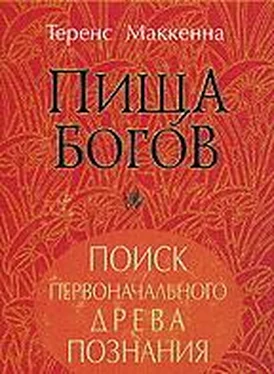
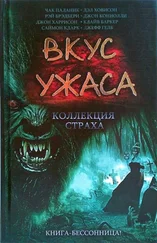

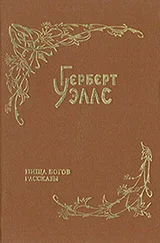
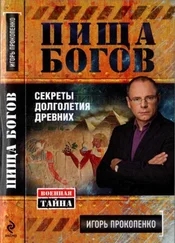
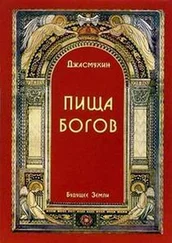
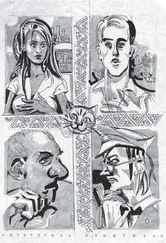
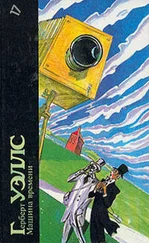
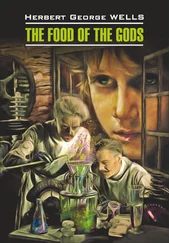
Всё содержание книги - ностальгия о прошлом. Прошлого не вернуть и в этом нет необходимости. В далёком прошлом медицины не было и эту роль выполняли шаманы, их называли по-разному: шаман, знахарь, колдун, ведьма и т.п. И они вылечивали соплеменников. Теперь это делает медицина.
Что касается шаманизма, то автор не знает существа шаманизма, поэтому всё сказанное не имеет смысла, кроме информации о его существовании. О последствиях использования наркотиков говорить не нужно. А что может увидеть наркоман Ответ - то, что видит во сне. А для нормального видения ИНОГО сознание человека должно созреть.
А наркотик взламывает и уродует часть мозга, что и вызывает видения. И это часто не остаётся без последствий.
А делать надо вот что:
1. Выполнить, как утверждает автор, «милицейские требования» Ветхого Завета.
2. Пройти путь посвящения, указанного в Новом Завете.
3. Пройти пути Социализма и Коммунизма – на земле; или Царства Небесного и Царства Божия – по Библии, или шестую и седьмую расу по - восточной религии.
Вот тогда – то человек и перейдёт из тела животного в своё собственное и переселится в свою зону обитания. И тогда не потребуется ни какая травка, ни какой грибок для перехода в другие измерения, И человек сможет свободно посещать любые точки пространства нашей галактики.
Следует иметь в виду то, что одновременного массового перехода не было и быть не может. Каждый человек получал и получает эту возможность индивидуально за свои заслуги, за свои труды здесь на земле. И такие люди есть на земле всегда, но их очень мало. А современное человечество их не слышит и не может их слышать, т.к. главное стремление современного человека - материальное благополучие и секс, а всё остальное - способы их достижения.